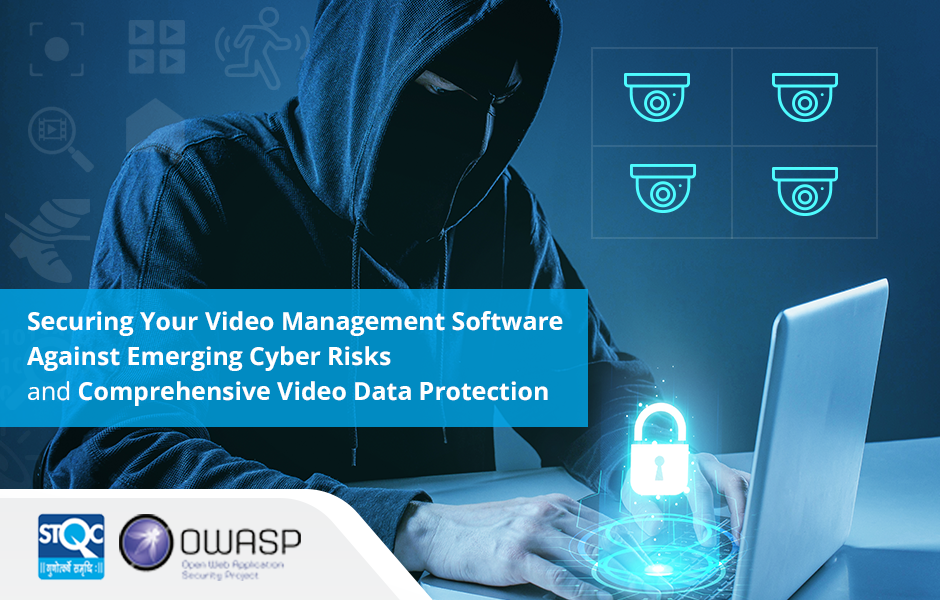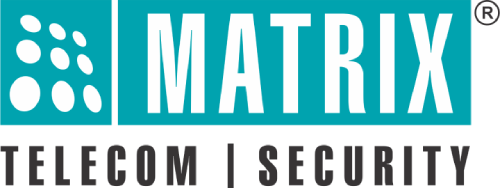
In today’s world, where cyber threats are becoming increasingly sophisticated, the importance of securing video surveillance systems cannot be overstated. For organizations relying on video management software (VMS) to protect their assets, ensuring that these systems are both robust and cyber-secure is critical.
If a cyber attack targets a video surveillance system, the consequences can be serious—hackers might gain access to live video feeds, alter or delete recorded footage, or even shut down the system completely, leaving important areas unprotected. This not only puts the physical security of your property at risk but also exposes sensitive information, such as employee identities, access codes, or security protocols.
If this data is stolen, it can lead to data breaches where unauthorized individuals gain access to restricted areas, financial data, or personal information. Such breaches can result in legal troubles, financial losses, and severe damage to your organization’s reputation.
In places like government buildings, critical infrastructure, or banks, the impact of such an attack could be devastating, affecting public safety and disrupting essential operations. So, it is very important to choose a video management system that is cyber-secure.
How to Protect Your Video Management Software from Cyber Attacks
The first step in safeguarding your Video Management Software (VMS) from cyber threats is to ensure that it complies with recognized security standards. One of the most effective ways to do this is by choosing a VMS that is STQC Certified for compliance with the OWASP Top 10 Desktop Security Risks.
What are the OWASP Top 10 Desktop Security Risks and How Do They Affect Video Management Software?
- Injection
Injection attacks could allow attackers to run unauthorized commands within the VMS, leading to the manipulation, deletion, or corruption of video data. This could undermine the integrity of video evidence, making it unreliable in critical security incidents or legal proceedings.
- Broken Authentication and Session Management
Broken authentication mechanisms could enable attackers to hijack sessions or impersonate authorized users. This could grant them access to sensitive areas of the VMS, including live video feeds and stored recordings, putting the entire surveillance operation at risk.
- Sensitive Data Exposure
If VMS does not properly secure sensitive data, such as encryption keys, login credentials, or video footage, this data could be exposed to unauthorized parties. Such exposure could lead to serious privacy issues, like someone accessing private video footage from secure areas, and misuse, such as using the footage for blackmail or sharing it publicly to cause harm.
- Improper Cryptography Usage
Utilizing weak or improperly implemented encryption could allow attackers to decrypt video files or other sensitive data transmitted or stored by the VMS. This could result in unauthorized access to video content or the ability to tamper with footage, such as altering timestamps or editing out crucial parts of a recording, compromising the security and integrity of the system.
- Improper Authorization
Improper authorization can allow unauthorized users to access restricted areas of the VMS. This could enable them to alter system settings, delete video evidence, or access and manipulate sensitive video feeds, potentially leading to severe security breaches.
- Security Misconfiguration
Security misconfigurations, such as default passwords or unnecessary open ports, can create easy entry points for hackers. Exploiting these vulnerabilities could allow unauthorized access to the VMS, leading to system disruptions or unauthorized viewing and alteration of video content.
- Insecure Communication
If the VMS transmits data over unencrypted or poorly encrypted channels, attackers could intercept this data during transmission. This could allow them to view live video feeds, access sensitive information, or even insert false data into the surveillance system, severely compromising the reliability of the system.
- Poor Code Quality
Poor code quality can introduce vulnerabilities, such as buffer overflows or improper error handling, into the VMS. Attackers could exploit these weaknesses to gain control over the system, disrupt its operations, or access and alter video footage, endangering the entire surveillance operation.
- Using Components with Known Vulnerabilities
Relying on outdated or unpatched components with known vulnerabilities can make the VMS an easy target for attackers. Exploiting these vulnerabilities could allow attackers to compromise the system, disrupt surveillance activities, or gain unauthorized access to sensitive video data.
- Insufficient Logging & Monitoring
Without proper logging and monitoring, suspicious activities within the VMS may go unnoticed. This could allow attackers to operate undetected, manipulating or deleting video evidence and compromising the security of the surveillance system without immediate detection, leading to significant operational and security risks.
Matrix Video Management Software: Compliant with OWASP Top 10 Desktop Security Risks
Matrix Video Management Software, SATATYA SAMAS, fully complies with the OWASP Top 10 Desktop Security Risks, implementing advanced security measures to safeguard your video surveillance system from threats like injection attacks, broken authentication, and other critical vulnerabilities. This rigorous approach to cybersecurity is validated by the STQC certification, ensuring that your system is protected against even the most sophisticated cyber threats.
Why is the STQC Certification So Important?
STQC, or Standardization Testing and Quality Certification, signifies adherence to rigorous security and quality standards. This certification is widely recognized as a benchmark in the industry because it involves comprehensive testing, and exhaustive evaluations to ensure that products meet strict security requirements.
For Matrix Video Management Software, SATATYA SAMAS, obtaining STQC certification means that VMS has been validated to effectively counter the OWASP Top 10 Desktop Security Risks.
For organizations, having an STQC-certified VMS is crucial—it signifies that the system has been independently validated to defend against sophisticated cyber threats, providing a critical layer of trust and reliability in today’s high-stakes digital environment.
Applications for STQC Certified VMS
An STQC-certified VMS is essential for safeguarding various critical sectors:
Government Buildings: Protecting video surveillance systems in government facilities is crucial to defend sensitive areas from unauthorized access and cyber threats. An STQC-certified VMS ensures that both live feeds and recorded footage are secure, upholding national security.
Critical Infrastructure: For industries such as power plants, water treatment facilities, and transportation networks, continuous and secure monitoring is vital. A cyber-secure VMS helps prevent disruptions and protects these key services from potential cyber-attacks.
Financial Institutions: Banks and financial institutions manage extensive sensitive information. A breach in their video surveillance systems could result in substantial financial loss and damage to customer trust. STQC certification guarantees that the VMS provides robust cyber defenses to protect against such risks.
Healthcare Facilities: With hospitals and clinics storing sensitive patient data, securing surveillance systems is imperative to prevent cyber threats. An STQC-certified VMS ensures that these systems are protected, maintaining the security of both patient information and staff operations.
Secure Your Surveillance, Secure Your Data
Don’t leave your video surveillance system vulnerable to cyber threats. Matrix is among India’s First Companies to Offer End-to-End STQC STQC-certified video Surveillance Solutions. Matrix Network Cameras comply with OWASP ASVS 4.0 L2 norms, certified and tested by STQC. Matrix VMS is also STQC Certified now, offering guaranteed protection against OWASP Top 10 Desktop Security Norms.
Matrix delivers comprehensive security—protecting people, property, assets, and now your surveillance data against cyber threats. Don’t wait until it’s too late—secure your organization today with a trusted, STQC-certified video surveillance system from Matrix. Ensure your peace of mind with our cutting-edge solutions designed to keep you safe and secure.
Contact our experts now at: inquiry@matrixcomsec.com.

